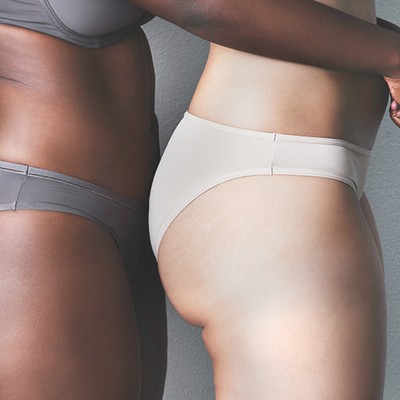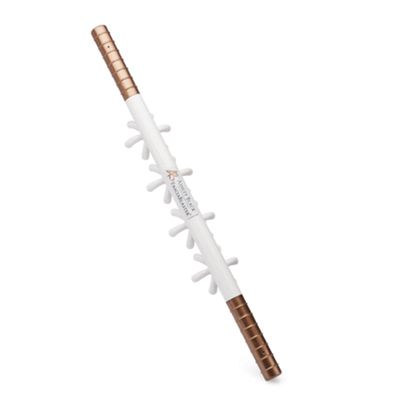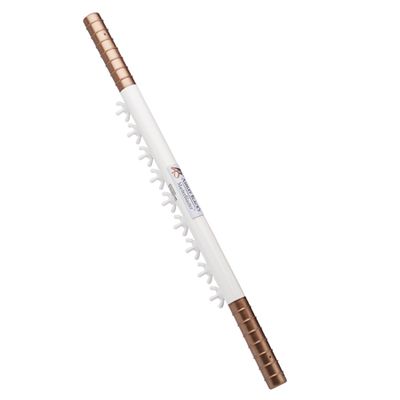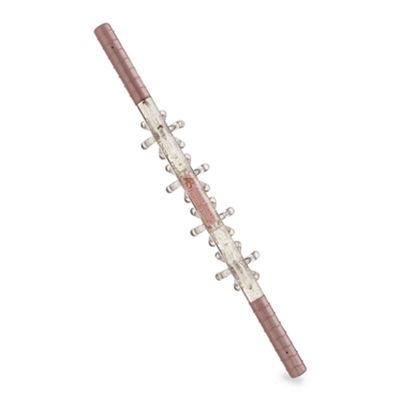
What Is Your Fascia?
A glance at Black’s closed Facebook group, which has more than 220,000 members, reveals some impressive before-and-after photos. So, what exactly is the fascia and is it really the key to a smoother, leaner body? We caught up with Ashley Black herself for the lowdown...
What exactly is the fascia?
You can’t see your fascia, but everyone has it. Put in the simplest terms, fascia is your body’s connective tissue that surrounds the muscles and organs. Many doctors are now considering the fascia to be the organ of structure or posture – at its best, the fascia is a thin membrane that covers all of your muscles; at its worst, it bonds together to create knots, pain and tension, impeding the body’s ability to exercise within its full range of motion and then enforcing the body’s tendencies to restrict itself and shorten.
The amazing thing about the fascia is that it’s only now being medically recognised for its importance in maintaining a healthy, fit, toned, calm and aligned body. It wasn’t until 2007 that the first international Fascia Research Congress was held at Harvard Medical School, bringing a whole new awareness to the fascial system.
Who exactly is prone to fascia problems?
As everyone has a fascia, everyone is susceptible to fascia problems. Because your fascia is a system in the body, pretty much anything that can affect the body at a cellular level can affect the fascia. Lifestyle factors have been known to play a particular part – for example, if you have an unbalanced diet, are dehydrated, don’t carry out regular exercise or don’t stretch regularly, then you’re more likely to develop unhealthy fascia. It’s also interesting that fascia doesn’t respond well to high-intensity exercises like running and boxing, so take note if you’re a keen gym-goer. Every move you make, your fascia reacts to you. Any kind of high impact activity can cause the fascia to clamp up and adhere to itself and other structures in the body, such as muscles, bones and skin. This makes your fascia rigid and stiff, which causes pain, tightness or dull soreness.
What are the signs your fascia could do with some TLC?
Pain, tightness, cellulite and even distortion of the muscles can be indicative of fascia build-up. Some common conditions such as headaches, plantar fasciitis (common in runners), IT band syndrome, frozen shoulder and any lack of movement or swelling in your joints can be attributed to distortions in the fascia. As veins and arteries run through your fascia, the circulatory system can also be affected. If you suffer from cold or numb extremities, this could also be a sign your fascia needs some TLC.
What are the benefits of looking after your fascia?
Looking after fascia literally improves every aspect of human appearance and performance. Physically, it can reduce pain and tightness, hasten muscular recovery, boost collagen, improve posture, and enhance physical performance. Aesthetically, looking after fascia can help you release trapped fat and reduce cellulite, stretch marks, and the appearance of scarring, as well as boost collagen production and help to smooth fine lines and wrinkles.
How connected is fascia to cellulite?
Very – fascia is the root cause of cellulite. We are so often told that having cellulite means we need to reduce our body fat when in reality, it’s caused by fascial distortions that pull down on the skin, creating those dents and divots we call cellulite. The appearance of the dimples is definitely very real, but the cause is different from what we’ve been told. The more fat someone has, the more apparent the dimples and dents look, but at its core, cellulite is not a fat problem, it’s a fascia problem. In order to completely end cellulite and be healthy in general, I really believe in using the FasciaBlaster on a regular basis, along with eating clean and exercising regularly.
How exactly do you use it?
Start by applying some oil to the area you want to treat (this will make the process more comfortable) and begin by gliding the claws of the FasciaBlaster over your skin gently and quickly. Especially when you’re first starting out, take it easy – you should barely be making an imprint on your skin. The more you use it, the firmer you can be. Try to use up-and-down and side-to-side motions for around three to five minutes on each targeted area. Before moving onto the next spot, lightly glide over the entire body part you’ve been working on – this will help to keep the blood flowing.
How is it different to foam rolling?
Foam rolling, also known as self-myofascial release, merely compresses your tissue and rolls over the fascia. It’s a great way to make a tense muscle feel better but you need to go deeper if you want to target your fascia. The FasciaBlaster is designed to rake through those deep layers of fascia.
How quickly can you see results?
Most people can feel a difference with just one use but if you stick with it, you can see real results in around 30 days. Your fascia does need a little bit of daily maintenance and it’s really important to be consistent with the tool if you want to see results. If you can only squeeze it in twice a week but can maintain it, that’s far better than doing it every day for two weeks and then stopping for a while.
The bottom line?
In a perfect world, we would all have healthy fascia, but the reality is that misalignments and structural imbalances are all too common. If you’re after good posture, less pain and better skin tone, it really is worth giving your fascia some TLC.
For more information visit FasciaBlaster.com
DISCLAIMER: We endeavour to always credit the correct original source of every image we use. If you think a credit may be incorrect, please contact us at info@sheerluxe.com.


